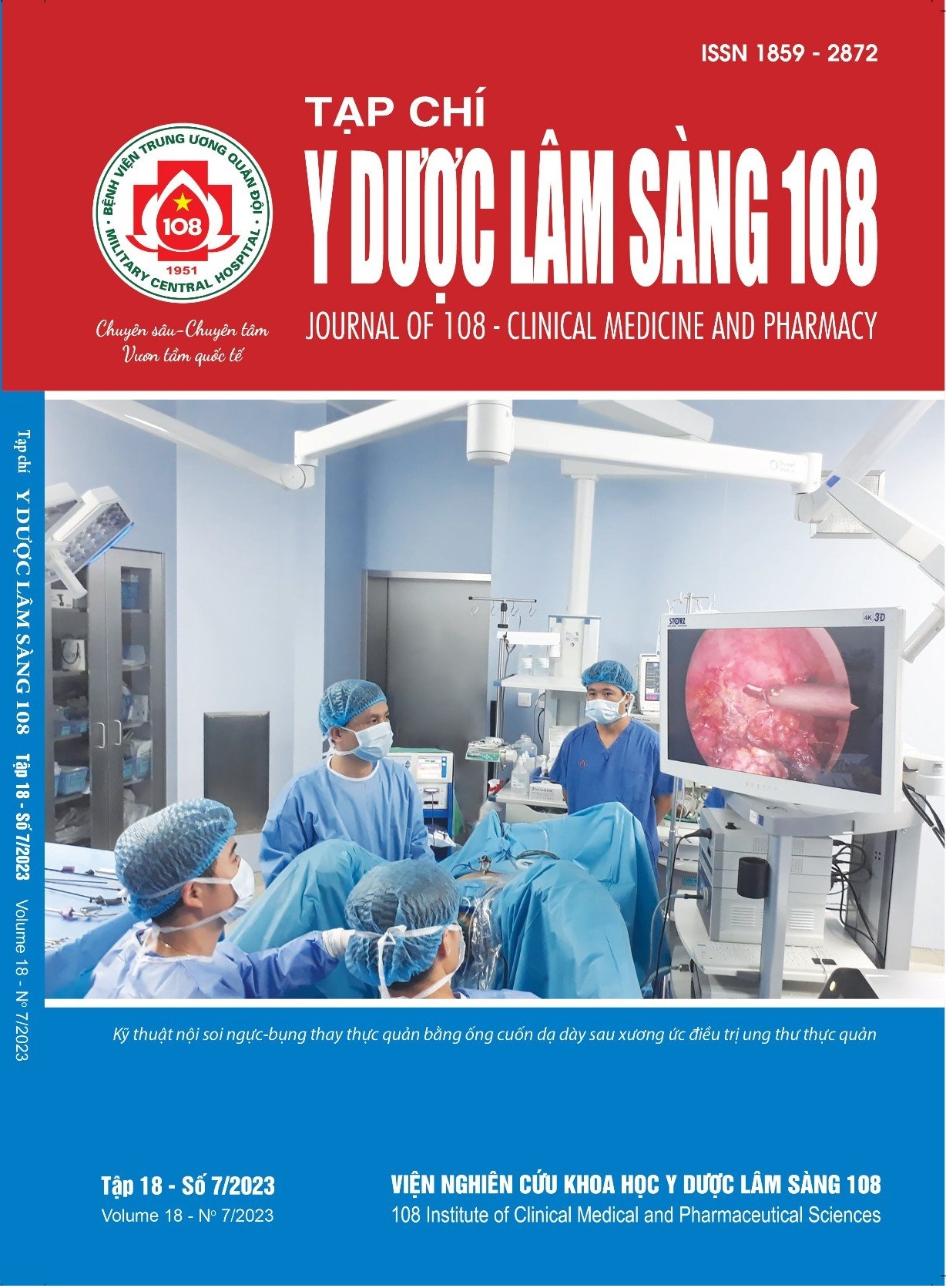Evaluating the efficacy and safety of the retrograde endoscopic pancreatic method for treating common bile duct stones at 108 Military Central Hospital
Main Article Content
Keywords
Abstract
Objective: To assess the effectiveness and safety of the retrograde endoscopic pancreatic method (ERCP) for treating common bile duct stones at 108 Military Central Hospital. Subject and method: A combined retrospective and prospective study was conducted on 785 inpatient treatments at 108 Military Central Hospital during which ERCP was performed from January 2021 to December 2022. Result: In the study population, 51.08% were male, 66.62% were over 60, and 22.55% had previously undergone ERCP. Of the 763 patients (97.2%) who underwent ERCP, 83.88% had complete stone removal, 15.07% had partial stone removal, and 29.88% had biliary stent placement. Inflammatory markers, biliary obstruction, and liver injury all significantly improved after ERCP. ERCP-related complications occurred in 84 patients (10.7%), primarily mild acute pancreatitis (9.04%). Respiratory distress and perforation occurred in 0.25% and 0.38%, respectively, while bleeding occurred in 1.02% of patients, all managed promptly and stabilized through intensive treatment. Conclusion: ERCP is an effective treatment method for common bile duct stones with a high success rate and low complication rate. It is the primary treatment for patients with common bile duct stones at 108 Military Central Hospital.
Article Details
References
2. Maharshi S, Sharma SS (2021) Early precut versus primary precut sphincterotomy to reduce post-ERCP pancreatitis: Randomized controlled trial (with videos). Gastrointest Endosc 93(3): 586-593.
3. Lê Quang Quốc Ánh (2003) Nội soi mật tuỵ. Nhà xuất bản Y học, Hà Nội.
4. Committee ASoP, Chandrasekhara V, Khashab MA, Muthusamy VR, Acosta RD, Agrawal D et al (2017) Adverse events associated with ERCP. Gastrointest Endosc 85(1): 32-47.
5. Dương Xuân Nhương (2019) Nghiên cứu đặc điểm lâm sàng và cận lâm sàng và kết quả điều trị sỏi ống mật chủ ở người cao tuổi bằng NSMTND. Học viện Quân Y.
6. La Văn Phú, La Vĩnh Phúc, Trần Minh Quân, Nguyễn Trung Hiếu (2021) Kết quả sớm điều trị sỏi ống mật chủ ở bệnh nhân cao tuổi bằng nội soi mật tụy ngược dòng tại Bệnh viện thành phố Cần Thơ. Tạp chí Y học Việt Nam 513, tr. 62-65.
7. Nguyễn Anh Tân, Dương Hồng Thái (2022) Kết quả điều trị sỏi ống mật chủ bằng kỹ thuật nội soi mật tuỵ ngược dòng tại Bệnh viện Đa khoa tỉnh Bắc Ninh. Tạp chí Y học Việt Nam 511(2), tr. 62-65.
8. Nguyễn Công Long, Lục Lê Long (2022) Đánh giá kết quả phương pháp nội soi mật tuỵ ngược dòng ở bệnh nhân sỏi ống mật chủ tại Bệnh viện Bạch Mai. Tạp chí Y học Việt Nam, 513, tr. 62-65.
9. Dương Minh Thắng, Phạm Minh Ngọc Quang, Vũ Thị Phượng (2019) Kết quả nội soi mật tụy ngược dòng cấp cứu điều trị viêm đường mật và viêm tụy cấp thể phù nề do sỏi ống mật chủ. Tạp chí Y dược lâm sàng 108, 14(7), tr. 7-12.
10. Ahmed M (2018) Acute cholangitis - an update. World J Gastrointest Pathophysiol 9(1): 1-7.
 ISSN: 1859 - 2872
ISSN: 1859 - 2872
